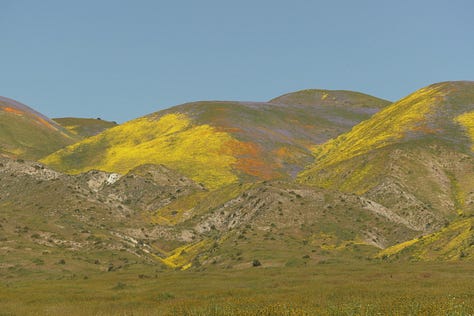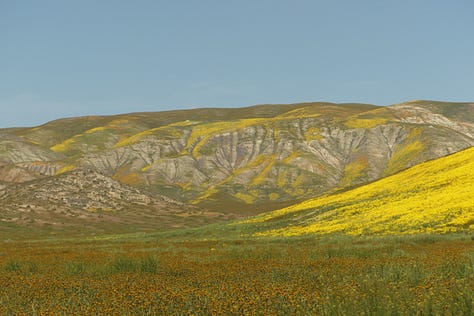The Grain Rains 穀雨 mark the end of cold weather and rising temperatures. It is a time for farmers to prepare their fields and paddies for planting. The name of the season is reflected in an old saying from China that said, "Rain brings up the growth of hundreds of grains." In some parts of East Asia, this season coincides with the start of the rains, though it is a bit early for rain in Tokyo. In Tochigi, late April marked the time when yellow sands and dust began to blow east from the deserts of western China, getting everywhere. It was also a good time to buy “new” green tea.
More than anything, it was time for visiting the nearby Ashikaga Flower Park, where every year the world became a purple wonderland under the blossoming wisteria trees (Video here).
Then, just as the purple flowers began to fade, the peonies in my tea teacher's garden would bloom!
For at least a thousand years in Japan, the Time of Grain Rains was divided into the three microseasons used in China. Late in the Edo period, however, when the calendar was reformed to reflect a more Japanese sensibility, these changed to “time of reeds beginning to sprout,” “frost ends and rice seedlings grow,” followed by the “peonies blossoming.”
The most striking feature one finds in the Chinese calendar is the dominant place the sighting of birds plays. Out of the 72 microseasons or kō, 23 had bird-related names, making it the largest grouping of seasonal names in the Chinese calendar, pointing to the particularly special place birds had in the hearts of the ancient Chinese. Bird-related names were followed by nineteen names related to the weather (such as the wind or thunderstorms), while plants, insects and animals were represented by 13, 9 and 6 names respectively. There were only two fish-related seasonal names in the Chinese calendar.
China
First pentad: 萍始生, 'Duckweed begins to sprout'
Second pentad: 鳴鳩拂其羽, 'Cuckoo shakes off wings' (Liza Dalby, whose book on the microseasons makes use of the older Chinese version, calls this Pigeons Flap their Wings)
Last pentad: 戴勝降于桑, 'Hoopoe perches in mulberry trees'
Japan
First pentad: Ashi hajimete shōzu (葭始生), 'Reed begins to bud'
Second pentad: Shimo yamite nae izuru (霜止出苗), 'Frost ends and rice seedlings to grow'.
Last pentad: Botan hanasaku (牡丹華), 'Peony blooms'.
Not surprisingly, it is plants and flowers, rather than birds, which are most conspicuous in the later Japanese-adapted calendar, with 27 associated seasonal names. You can see this above in the way the cuckoo and hoopoe have been replaced by rice and peonies.
Here in Southern California, birds would need to be put back! I would tentatively describe this time of year as “birds loudly singing in the predawn morning,” “lemon, orange and grapefruit blossoms scattering in the wind like snow,” and “birds, rats and squirrels gorging at the birdfeeders!”
In a superbloom year, it could also mark the end of wildflowers.












Wonderful! And, yes, put the birds back in the calendar! Find a special place for the Peacocks in Pasadena.
I love these pictures! Great post! I’m loving your newsletter!